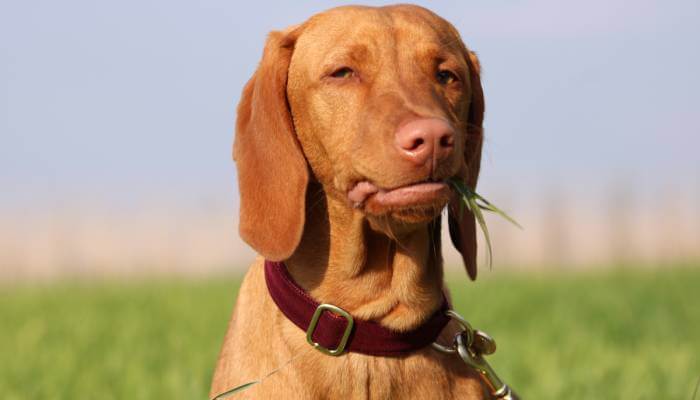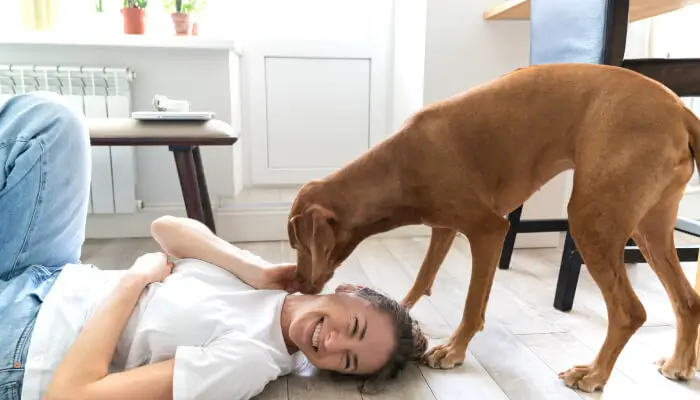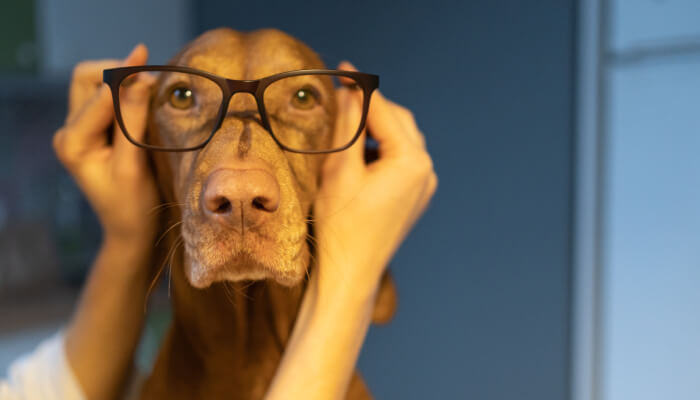Allergies can affect all dogs, but some breeds seem to be more susceptible than others. Usually, these include Vizsla (AKA the Hungarian greyhound), Dalmatian, Rhodesian ridgeback, and bichon frise. Some of these breeds have much thinner skin than others, which means that they may react differently to allergens. For example, since Vizslas have delicate skin, they may be more likely to develop allergies than other dogs.
Vizslas who have allergies will often scratch and lick their skin excessively. Other symptoms of an allergy include runny eyes or nose, redness around the face and ears, ear infections that are hard to clear up, inflamed skin that may cause hair loss.
The most common causes of allergies in dogs are fleas and food (either something they’re eating or the chemicals used to make it). Other causes include contact with plants like poison ivy, grasses, trees; pollen; dust mites; detergents; certain medications, and even people.
If you’re a dog owner, then you know how difficult it can be to find the best allergy medication for your Vizsla. However, this article will talk about common allergies in vizslas, symptoms of allergies in vizslas, and more!
What Are The Common Allergies In Vizsla?
Vizsla can suffer from allergies just like humans. These dog allergies can occur by a variety of things: food, contact with cats or other animals, and environmental allergens such as pollen in the air.
The most common allergies in vizslas are:
Atopy
Atopy is a type of dog allergy that develops through the dog’s skin.
Contact Dermatitis
Contact dermatitis develops from contact with an environmental allergen such as pollen or mold.
Other environmental allergens that can cause allergy symptoms are wool, grass pollens (late spring to early autumn), trees (autumn through winter), house dust mites, feathers, and certain types of pollen.
Food Allergies
The most common type of food allergies in vizslas come from beef, lamb, and chicken.
Pollens can cause food allergies in your dog. They may have a problem digesting certain foods, and when they eat them, the body will react negatively.
Flea Allergy Dermatitis (FAD)
Dog flea allergy dermatitis occurs due to the dog’s reaction to a bite from an infected flea.
Allergic conjunctivitis
It is a type of eye allergy that occurs due to an environmental allergen such as pollen.
Symptoms Of Allergies In Vizsla
Allergic reactions in dogs trigger when the body comes into contact with these allergens or triggers and produces specific antibodies to fight them off.
Itching, skin irritation, and hair loss are common symptoms of FAD. When your dog has allergies, some of the symptoms may include:
- Itchy skin, paws, and ears.
- Red inflamed eyes, often with discharge or crusting.
- Sneezing.
- Skin rashes or hives on your dog’s body (often seen between their toes).
- Nasal discharge or nasal congestion.
- Itchy eyes, nose, and throat.
- Skin inflammation (e.g., redness) in the ears/face region and hind paws or feet on a dog with a long hair coat.
- Hair loss.
- Bald patches.
- Scaly skin around the eyes and nose due to licking at itchy ears
- Chewing on their feet to relieve the itchiness
- Red or raw paws from itching
What Causes Allergies In Vizsla?
The first thing you need to do when your dog is itchy is to find out what the cause of their itchiness might be. Triggers (e.g., pollens, molds) that set off allergies in some dogs are not common in others.
Some of the most common causes for allergies in dogs are:
- Fleas or flea bites.
- Contact with toxins like insecticides or cleaning fluids.
- Dander from a specific dog or animal that your dog is allergic to.
- Irritant substances like pollen, plants, and dust mites
- Other Chemicals like smoke, perfume, or paint
Can You Cure Allergies In Vizsla?
You can’t cure allergies in dogs. But you can help them with the symptoms. So they are less uncomfortable and have a better quality of life.
The goal is to relieve their allergy symptoms rather than eliminate them because there may not be a cure.
How To Treat Allergies In Vizsla?
The first thing you need to do when your dog is itchy is to find out what the cause of their itchiness might be. There are many ways you can help your dog with their allergies, including:
Fresh Air And Exercise
We are providing them with fresh air and exercise to reduce the effects of pollen or other allergens outside.
Cold Baths
They are giving them cold baths so they can relieve itching from hot spots or skin irritations caused by an allergy-triggering substance.
Using Anti-Allergen Shampoo
Bathing them with a shampoo that significantly relieves skin irritations and itchiness.
Drying Their Wet Coat
Drying their coat after baths or when they’re wet. So it isn’t moist, leading to itching.
Provide Them Good Food
Feeding them a diet that is mainly for dogs with allergies. Thus, choosing the right food for your dog’s allergy symptoms (e.g., hypoallergenic foods) is essential.
Giving Them A New Home
Moving them to a new home with no animal dander or other allergens they are allergic to, like carpet or furniture.
Medications
Using medication, like steroids or antihistamines.
Consult Your Vet
Please consult your vet for help with their allergies. Your vet can suggest you better treatments or medications to help your dog with its allergies.
How To Help Your Vizsla With Allergies?
There are many ways you can help your dog with their allergies, including:
Cleaning the House
The most challenging task for an allergy sufferer may be keeping allergens out of her environment to feel better and enjoy life more. So, cleaning up after your dog and keeping the house clean can help with this.
Provide Them Good Food
It is essential to choose a that is mainly for Vizslas with allergies or feeding them hypoallergenic foods. Besides this, a proper diet will also go a long way in helping your Vizsla feel better. Thus, giving them good quality food they are not allergic to will relieve some of the symptoms and help them feel better.
Provide Them Good Quality Food
Giving your Vizsla good quality food they are not allergic to will relieve some of the symptoms and help them feel better. Providing them with fresh air, exercise, cold baths, or anti-allergen shampoo can also go a long way in helping them feel better.
Providing Them Fresh Air And Exercise
The most challenging task for an allergy sufferer may be keeping allergens out of her environment to feel better and enjoy life more. Cleaning up after your dog and keeping the house clean can help with this and provide them fresh air and exercise to reduce the effects of pollen or other allergens outside.
Medications And Care
You can give medications like antihistamines and steroids to relieve the symptoms. Your veterinarian can recommend whether or not these are right for your Vizsla, as well as other treatments that might help with their allergies.
What Happens If You Don’t Treat Allergies In Vizsla?
If you don’t treat an allergy in a dog, the symptoms will worsen and become more challenging to manage.
The condition can also lead to secondary skin infections or lung infections if left untreated.
In some cases, if left untreated, the symptoms of an allergy can change behavior and moods in a dog which might lead to seizures from allergies to food or various chemicals found around their home.
If you notice any changes in your Vizsla’s personality, you must take them for medical attention as soon as possible.
Severe itching can also cause extreme inactivity and lethargy from too much time spent resting and trying to stay away from the itch.
If you do not treat the symptoms of FAD, it can lead to skin infections and other more severe issues like anemia from excessive scratching.
I will list down all of it to make it easier for you. Some side effects of untreated allergies in dogs include:
- Skin Infections
- Anemia From Excessive Scratching or excessive scratching.
- Changes In Behavior And Moods
- Seizures
- Lethargy
- Severe Inactivity
Conclusion
In a nutshell, allergies in Vizslas are a relatively common occurrence. They can cause various symptoms, from severe itching to changes in behavior and moods or seizures. Usually, you can treat allergies with medications like antihistamines and steroids. So, your vet might recommend for you Vizsla cleaning the house where they live by removing allergens that may irritate them.



